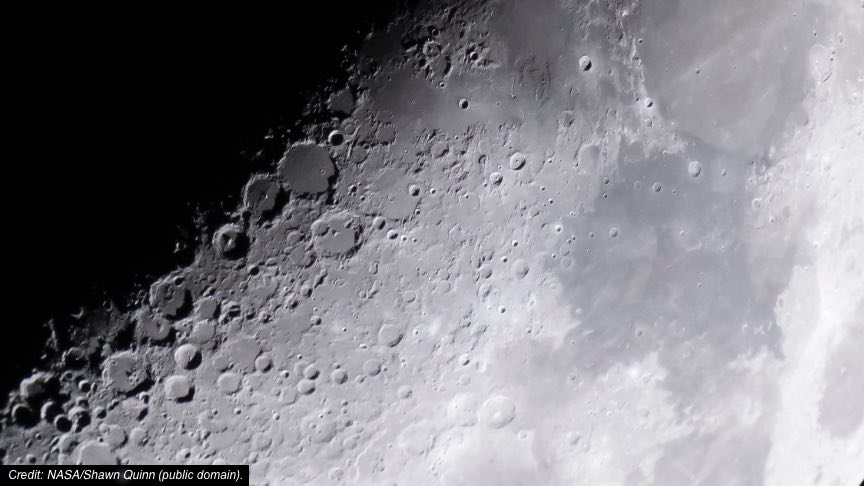According to NASA, under the contract Firefly will "deliver two rovers and three scientific instruments to the lunar surface as part of the agency’s CLPS (Commercial Lunar Payload Services) initiative and Artemis campaign to explore more of the Moon than ever before."
The mission is intended to gather information about the chemical composition of the Moon's South Pole and "discover the potential for using resources available in permanently shadowed regions of the Moon," NASA said.
According to Firefly, the mission will use the company's Elytra orbital vehicle and Blue Ghost lunar lander to get to the lunar surface.
In its announcement of the contract with NASA, the company described how the upcoming mission would unfold.
"During Blue Ghost Mission 4 operations, Firefly’s Elytra Dark transfer vehicle will first deploy the Blue Ghost lander into lunar orbit and remain on orbit to provide a long-haul communications relay for the mission. Blue Ghost will then land in the Moon’s south pole region, deploy the rovers, and enable payloads operations with data, power, and communications services for more than 12 days on the lunar surface."
The new contract with Firefly is part of NASA's Commercial Lunar Payload services (CLPS) initiative. The agency notes that the new contract will not be Firefly's first mission under CLPS.
"Firefly’s first delivery successfully landed on the Moon’s near side in March 2025 with 10 NASA payloads," NASA said. "The company’s second mission, targeting a launch in 2026, includes a lunar orbit drop-off of a satellite combined with a delivery to the lunar surface on the far side. Firefly’s third lunar mission will target landing in the Gruithuisen Domes on the near side of the Moon in 2028, delivering six experiments to study that enigmatic lunar volcanic terrain."
Lunar Mission Payload
In addition to carrying NASA payloads to the moon, the new contract includes provision for Canadian participation as well. In announcing the contract, NASA detailed the full scope of the required deliverables from Firefly. They include:
-
- MoonRanger is an autonomous microrover that will explore the lunar surface. MoonRanger will collect images and telemetry data while demonstrating autonomous capabilities for lunar polar exploration. Its onboard Neutron Spectrometer System instrument will study hydrogen-bearing volatiles and the composition of lunar regolith, or soil.
- Stereo Cameras for Lunar Plume Surface Studies will use enhanced stereo imaging photogrammetry, active illumination, and ejecta impact detection sensors to capture the impact of the rocket exhaust plume on lunar regolith as the lander descends on the Moon’s surface. The high-resolution stereo images will help predict lunar regolith erosion and ejecta characteristics, as bigger, heavier spacecraft and hardware are delivered to the Moon near each other in the future.
- Laser Retroreflector Array is an array of eight retroreflectors on an aluminum support structure that enables precision laser ranging, a measurement of the distance between the orbiting or landing spacecraft to the reflector on the lander. The array is a passive optical instrument, which functions without power, and will serve as a permanent location marker on the Moon for decades to come.
- A CSA Rover is designed to access and explore remote South Pole areas of interest, including permanently shadowed regions, and to survive at least one lunar night. The CSA rover has stereo cameras, a neutron spectrometer, two imagers (visible to near-infrared), a radiation micro-dosimeter, and a NASA-contributed thermal imaging radiometer developed by the Applied Physics Laboratory. These instruments will advance our understanding of the physical and chemical properties of the lunar surface, the geological history of the Moon, and potential resources such as water ice. It will also improve our understanding of the environmental challenges that await future astronauts and their life support systems.
- Laser Ionization Mass Spectrometer is a mass spectrometer that will analyze the element and isotope composition of lunar regolith. The instrument will utilize a Firefly-built robotic arm and Titanium shovel that will deploy to the lunar surface and support regolith excavation. The system will then funnel the sample into its collection unit and use a pulsed laser beam to identify differences in chemistry compared to samples studied in the past, like those collected during the Apollo program. Grain-by-grain analyses will provide a better understanding of the chemical complexity of the landing site and the surrounding area, offering insights into the evolution of the Moon.




